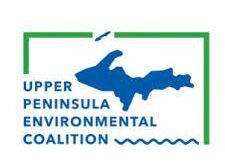
MARQUETTE, MICHIGAN – Stannard Rock Light is considered the most remote lighthouse in North America. The shallow reef that the lighthouse is built on (less than five feet deep in some spots), known as Stannard Rock, is 45 miles due north of Marquette and is also one of the most popular fishing spots on Lake Superior. The remote location is also ideal for a wide range of Great Lakes weather and climate research. The site now boasts a major, high-tech upgrade in the form of a new, state-of-the-art weather buoy!
Scientists from the Superior Watershed Partnership (SWP) and Lentic Environmental Services (LES) recently made the boat trip to Stannard Rock to deploy the buoy in about 67 feet of water approximately one mile north of the lighthouse. The buoy, which was funded by a grant from the Great Lakes Observing System (GLOS), will provide critical data on wave height, water temperature, wind speed, and other weather variables. The hour-by-hour data will be transmitted via satellite and posted to various websites, such as the Great Lakes Observing System (GLOS), the National Data Buoy Center , and the SWP. It is worth noting that while Stannard reef is less than five feet deep, the deepest spot on Lake Superior (1,333 feet) is located about 35 miles southeast of the lighthouse, north of the City of Munising.

“Weather data has been collected at the top of the lighthouse for many years, but this is the first time that mariners will be able to see exactly what the waves are doing out there as well,” said Dr. John Lenters, a senior scientist at LES and contractor for SWP. Given the long trek out to Stannard Rock, scientists hope the new data will be useful for boaters in making better-informed decisions before heading out to the reef. “We also anticipate that the information will be helpful for the Coast Guard, the Great Lakes Evaporation Network, and the National Weather Service,” said Lenters, “particularly in improving wave models and forecasts that are currently being generated for the Great Lakes.” Scientists were assisted by members of the SWP Great Lakes Conservation Corps (GLCC), an undergraduate student from Northern Michigan University, and Kimar’s Charters out of Shelter Bay. GLCC crew members installed a historic plaque on the lighthouse during the trip. Monitoring data will further boater safety, weather forecasting, climate research, and regional updates to adaptation plans. In November of 2015 a similar GLOS buoy that was deployed near Marquette recorded wave heights of up to 24 feet.
The Superior Watershed Partnership (SWP) has owned the lighthouse since 2015 and has expanded opportunities for U.S. and Canadian universities, agencies, and Great Lakes organizations to conduct a wide range of climate monitoring and research at the site. In fact, the Meteorological Service of Canada has credited monitoring data from Stannard Rock Light for more accurate regional weather forecasts. Retired Senator Carl Levin (D; Michigan) is pleased to see the lighthouse being used for such beneficial projects. “I worked to pass the National Historic Lighthouse Preservation Act in 2000 to allow for just this sort of transfer, which will preserve a historic treasure and give the community a new tool to promote tourism and encourage respect for the natural wonder and maritime history of our Great Lakes,” said former Senator Levin.
The SWP is also partnering with the Michigan State Historic Preservation Office (SHPO) to develop a Historic Structure Report (HSR) for Stannard Rock Light to enhance public education of Michigan’s unique maritime history. An HSR is the first step in developing a rehabilitation plan that allows SHPO and the SWP to promote public support and leverage resources to provide for long-term preservation of these significant maritime resources. For more information please contact the Superior Watershed Partnership.
 Keweenaw Report Your Source for Local News and Sports
Keweenaw Report Your Source for Local News and Sports






